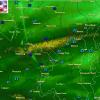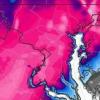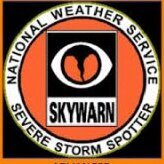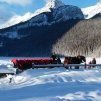-
Posts
2,915 -
Joined
-
Last visited
About high risk

Profile Information
-
Four Letter Airport Code For Weather Obs (Such as KDCA)
KBWI
-
Gender
Male
-
Location:
North Laurel, MD
Recent Profile Visitors
5,882 profile views
-
Not sure that this cell over DC needs a tornado warning, but I understand the caution
- 1,282 replies
-
- 2
-

-
- severe
- thunderstorms
-
(and 2 more)
Tagged with:
-
Yeah, the downburst was somewhat localized. Finally got power restored after 6 hours. Got 0.82" today. Unsure tomorrow whether the heavy rains will come north of DC.
-
It got real just south of you. Pretty significant tree damage here and power is out.
-
Significant downburst here in southern Howard County. Big pieces of trees down and no power
- 1,282 replies
-
- 4
-

-
- severe
- thunderstorms
-
(and 2 more)
Tagged with:
-
watch coming soon. The environment isn't awesome for severe, but there is a fair amount of downdraft cape, and storms will be quite organized.
- 1,282 replies
-
- 4
-

-
- severe
- thunderstorms
-
(and 2 more)
Tagged with:
-
Modest (at best) shear but a lot of cape and some downdraft cape. I guess it’s worth a SLGT, but right now, it’s a low- end SLGT.
- 1,282 replies
-
- severe
- thunderstorms
-
(and 2 more)
Tagged with:
-
Love seeing the activity in Anne Arundel and points east moving the northeast, while all of the activity in PG and points west is moving south.
-
A bunch of consecutive HRRR runs have another round of convection overspreading the area towards dawn. The NAM Nest has a similar idea, although it's weaker with that batch and then a bit heavier with some mid-morning showers. I've also heard various media forecasts promoting drier air for Wednesday afternoon, but a clear majority of guidance (minus the always overmixed GFS) keeps our dew points around 70 through Wednesday evening and doesn't really bring in the drier air until early Thursday. And several models show isolated convection just ahead of the front Wednesday evening.
-
Southern MD about to get drowned.
-
Yeah, there is some rotation, but it’s quite broad. But LWX is always nervous to miss something.
- 1,282 replies
-
- severe
- thunderstorms
-
(and 2 more)
Tagged with:
-
Some really weird boundary interaction must be supporting the rotation northeast of Baltimore, as the wind profile is almost as anti-supercell as you can get.
- 1,282 replies
-
- severe
- thunderstorms
-
(and 2 more)
Tagged with:
-
Sorry - I stole your rain. 0.30” here.
-
I’m not seeing much of a signal in the CAMs to support a higher PoP tomorrow out your way, but I hope it works out for you.
- 1,282 replies
-
- 1
-

-
- severe
- thunderstorms
-
(and 2 more)
Tagged with:
-
I'm not sure how much coverage there will be on Monday, but shear will be slightly improved (relative to today and tomorrow), and CAPE should be plentiful. It's probably a MRGL day with some potential for a late upgrade to a SLGT. A bigger threat might be localized flash flooding, with huge PW values and still relatively slow storm motion.
- 1,282 replies
-
- 3
-

-
- severe
- thunderstorms
-
(and 2 more)
Tagged with:
-
If that 9pm cell missed you, it couldn't have been by much. Storms just blew up a bit east of me - getting occasional thunder here.
- 1,282 replies
-
- severe
- thunderstorms
-
(and 2 more)
Tagged with:






